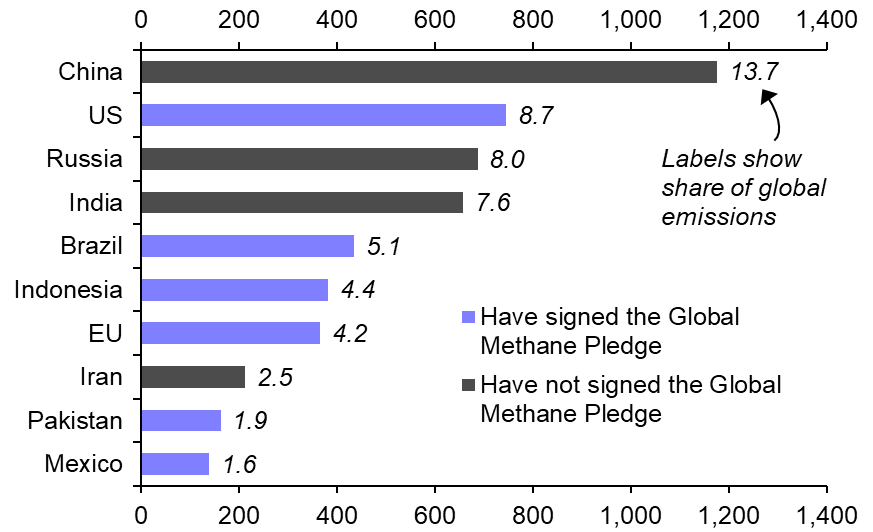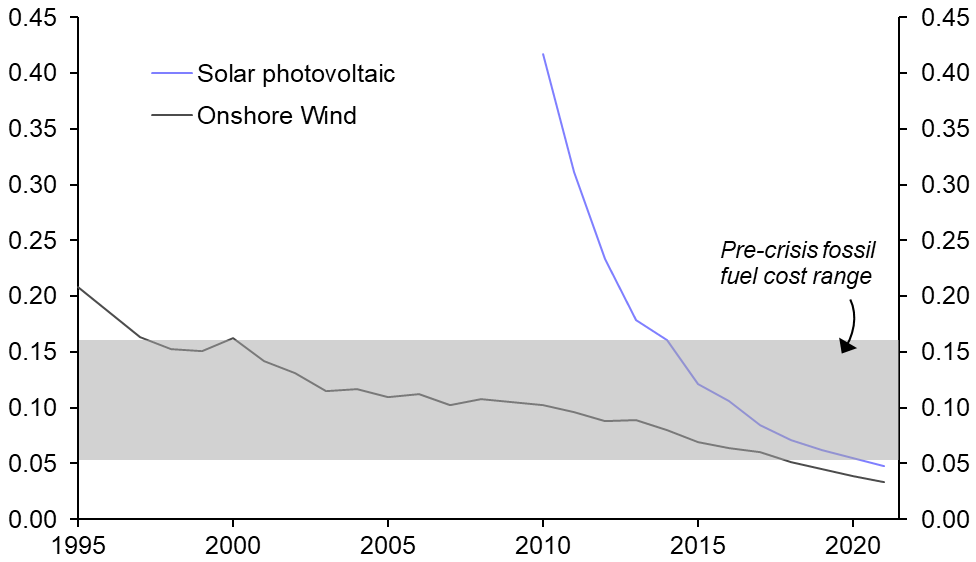- Ahead of the start of COP27 in Egypt on Sunday, this Update explains why one should take the rhetoric of such events with a pinch of salt and focus instead on firm political actions and economic drivers.
- “COP” stands for ‘Conference of the Parties’ and, at the risk of being pedantic, technically refers to the governing body of any international treaty. However, in the environmental arena, the term is synonymous with the annual Climate Change Conference at which parties to the UN’s Framework Convention on Climate Change (UNFCCC) convene. The 27th annual event kicks off in Sharm el-Sheikh this weekend.
- COP is a key date in the climate calendar but three factors mean it is arguably much more symbolic than decisive. For a start, it’s hard to disagree with those who say that COPs are heavy on rhetoric but light on substance. (Greta Thunberg memorably described politicians’ words as “blah, blah, blah”.) And even when seemingly concrete targets have been set – such as the commitment by the developed world at COP15 in 2009 to provide US$100 billion of “climate finance” each year to emerging economies by 2020 – key details such as what precisely should be counted as climate finance were left frustratingly unclear.
- Second, while the 2015 Paris Agreement saw 196 parties adopt the legally binding treaty to limit global warming, national interests still dominate and countries are selective as to what they sign up to. Indeed, it was notable that China, Russia and India – the first, third, and fourth biggest emitters of methane – did not commit to the pledge signed at COP26 to reduce global methane emissions by at least 30% between 2020 and 2030. (See Chart 1.) Finally, the fact that countries’ “net zero” targets stretch so far out in the future allows leaders to prioritise shorter-term problems when it suits. The focus in the UK has been on whether Prime Minster Sunak (or King Charles for that matter) will attend the event. But it’s surely more notable that Xi Jinping – the leader of the biggest polluter in the world – is once again likely to stay away.
- The bigger picture is that despite the media attention afforded to COPs, political actions between events are just as, if not more, important to follow. The passing of the Inflation Reduction Act in the US in August – which contains about 1.6% of GDP of new spending over the next decade to fund renewables and other green priorities – was welcomed as a sign of the US starting to back up its climate ambitions with actions. (See here.) Similarly, although the war in Ukraine has dealt a blow to the EU’s near-term climate ambitions, the focus on energy security will cause countries to accelerate efforts to decarbonise. (See here.)
- More generally, away from the political sphere, technological gains continue to reduce the cost of green technologies and will help to reduce emissions “organically”. As shown in Chart 2, the levelised cost (LCOE) of generating electricity from onshore wind has fallen by 85% since the first COP took place, in 1995. Meanwhile, the LCOE of solar panels has plunged by nearly 90% since 2010 alone (we do not have data before then). All told, whilst we maintain a healthy cynicism towards the rhetoric of events such as COP, we are optimistic about the ability of technology and economic incentives to help reduce emissions.
|
Chart 1: Top-10 Emitters of Methane |
Chart 2: Levelised Cost of Electricity Generation (US$2021 per kWh) |
|
|
|
|
Sources: Climate Watch, Capital Economics |
Sources: UN IRENA, Our World In Data |
David Oxley, Head of Climate Economics, david.oxley@capitaleconomics.com

